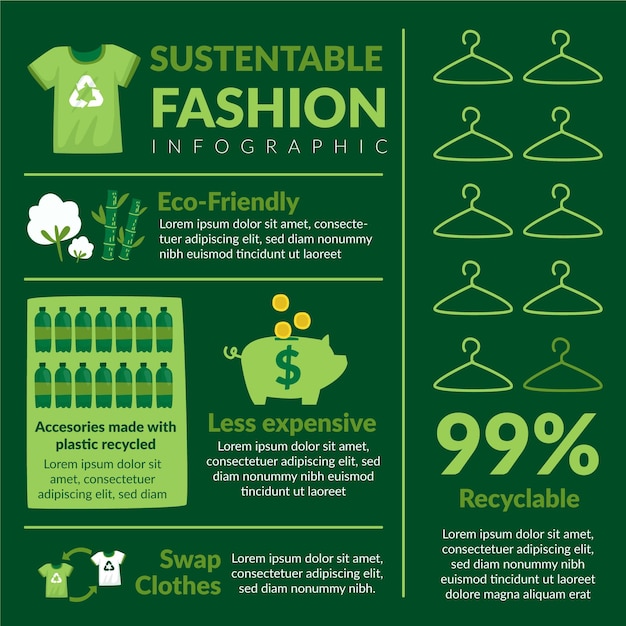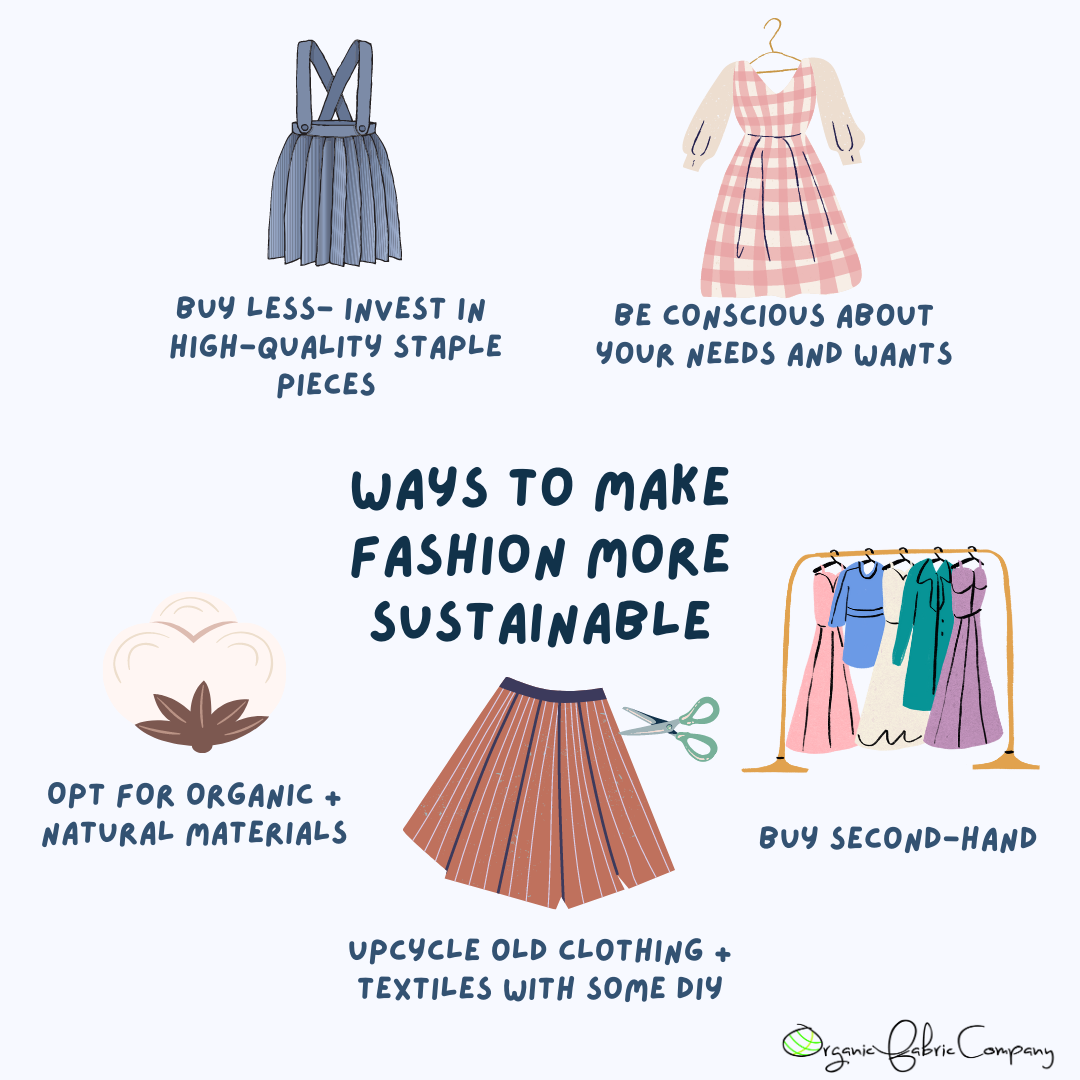Exactly How Cape Town Sustainable Fashion is Forming Eco-Conscious Buying
Exactly How Cape Town Sustainable Fashion is Forming Eco-Conscious Buying
Blog Article
Keep Ahead of the Contour by Exploring Cutting-edge Style Patterns
In a market as vibrant as style, staying in advance entails even more than simply complying with current trends-- it requires an expedition of development. The merging of modern technology and style advertises a brand-new era of consumer involvement.

Welcoming Smart Textiles
In the last few years, the apparel industry has observed a transformative change with the assimilation of smart textiles, an advanced advancement that blends modern technology with fabric. This advancement represents not only a blend of aesthetics and performance but likewise a substantial leap in the direction of sustainability and customization in fashion. Smart textiles, likewise referred to as e-textiles, installed sophisticated electronics such as sensing units and conductive strings within the textile, making it possible for garments to communicate with the setting or the user.
These textiles are designed to keep track of physical specifications, such as heart price or body temperature, giving real-time health analytics. Beyond wellness applications, wise fabrics are likewise being utilized for flexible garments, which can alter shade or pattern in feedback to environmental stimulations, therefore using a vibrant fashion experience.
Moreover, the advancement of energy-harvesting textiles that produce power from movement or sunlight is leading the way for self-dependent wearable technology. This technology is appealing to eco conscious consumers and designers intending to lower the ecological impact of style. As research and advancement in this area development, clever fabrics are anticipated to come to be significantly prevalent, improving the landscape of modern-day fashion with their multifunctional capabilities.
The Increase of 3D Printing
Revolutionizing the production landscape, 3D printing has emerged as a game-changer in the garment industry. This advanced innovation has allowed designers to push the limits of creative thinking, producing detailed and personalized garments that were previously inconceivable. By leveraging electronic layout and additive manufacturing, 3D printing promotes the production of intricate geometries and patterns, allowing designers to trying out new structures and frameworks.
A noteworthy advantage of 3D printing in vogue is its capability to create on-demand, reducing waste and decreasing supply needs. This performance not just enhances manufacturing procedures yet also allows for rapid prototyping, making it possible for developers to bring their visions to life in a much shorter duration. Moreover, 3D printing supports modification somewhat unequaled by conventional approaches, providing special designs and tailored fits tailored to private consumer choices.
The rise of 3D printing has actually also democratized style, making it available to emerging developers who can now fabricate top notch pieces without considerable financial investment in typical manufacturing facilities. As innovation proceeds to development, the fashion business is poised to harness the full capacity of 3D printing, checking out brand-new materials and methods that will undoubtedly redefine just how style is conceived and generated.
Lasting Style Technologies
As the style industry faces journalism demand for ecological obligation, lasting style developments have arised at the center of transformative change. The growing awareness of ecological impact has sustained a change in the direction of more eco-conscious practices and products. Developers and brands are currently focusing on sustainability, integrating techniques that minimize waste and reduce carbon footprints.
One significant development is the rise of circular style, which highlights recycling and upcycling to expand the lifecycle of garments. This technique not only lowers waste yet also motivates consumers to adopt a much more conscious approach to apparel usage. In addition, the usage of lasting products, such as natural cotton, hemp, and recycled polyester, has obtained grip. These products need less water visit homepage and power during production, substantially decreasing environmental impact.
An additional development hinges on the adoption of ingenious dyeing methods that use waterless procedures or natural dyes, thus reducing the huge quantities of water and chemicals traditionally used in textile dyeing. Moreover, improvements in biotechnology have resulted in the creation of lab-grown natural leather and materials, supplying environmentally friendly and cruelty-free options to standard materials. Through these pioneering initiatives, the apparel industry is making significant strides in the direction of a much more lasting future.

Tech-Integrated Clothing
Tech-integrated garments represents a groundbreaking combination of style and modern technology, improving just how people interact with their clothing. This ingenious domain name is marked by the inclusion of smart fabrics and embedded digital components, boosting both performance and visual appeal. From fitness trackers installed in sports apparel to warmed jackets controlled using smartphone apps, tech-integrated apparel uses customers unprecedented benefit and flexibility.
Introducing brand names are driving this fad, focusing on producing garments that respond to ecological stimuli or user commands. For example, some garments can alter shade or pattern in feedback to temperature shifts, while others integrate why not look here biometric sensors to keep an eye on health and wellness metrics like heart price or stress and anxiety levels. The smooth assimilation of technology right into textiles likewise extends to ecological sustainability, with efforts to develop self-cleaning fabrics or garments that get used to weather problems, therefore lessening the requirement for multiple layers.
Furthermore, the arrival of wearable technology is not simply limited to apparel yet reaches accessories like watches and eyeglasses, further widening the scope of tech-integrated style. As the sector proceeds to innovate, the potential for customization and personalization in garments grows, providing customers distinct, tech-enhanced style experiences that satisfy their private demands and choices.
Future of Virtual Fashion
In recent times, the future of digital style has actually arised as a transformative force within the market, leveraging innovations in digital technology to redefine just how fashion is developed, experienced, and eaten. By incorporating enhanced reality (AR), online fact (VIRTUAL REALITY), and 3D design devices, designers can currently craft interactive and immersive experiences that transcend traditional fashion borders. Online fashion allows for the production of garments that exist entirely in digital environments, supplying limitless possibilities for development without the constraints of physical production.
This digital shift not only presents opportunities for creative expression but also addresses sustainability concerns fundamental in standard fashion methods. Cape Town Sustainable Fashion. By eliminating the requirement for physical resources, virtual fashion minimizes waste and minimizes carbon footprints. Furthermore, the rise of digital fashion straightens with the boosting customer need for tailored and distinct experiences, as virtual garments can be tailored and tailored to specific choices easily

Final Thought
The fashion market's future lies in the combination of sustainable methods and innovative technologies. Online style is positioned to redefine customer communications.
In current years, the style industry has experienced a transformative change with the combination of smart fabrics, a sophisticated development that blends innovation with fabric.As the fashion market grapples with the pressing need for ecological responsibility, lasting style developments have actually emerged at the center of transformative change.In current years, the future of digital fashion has emerged as a transformative force within the sector, leveraging innovations in digital modern technology to redefine how fashion is created, experienced, and consumed. The rise of virtual style aligns with the raising customer demand for individualized and special experiences, as virtual garments can be customized and tailored to private preferences with convenience.
The fashion market's future lies in the integration of lasting techniques and cutting-edge technologies.
Report this page